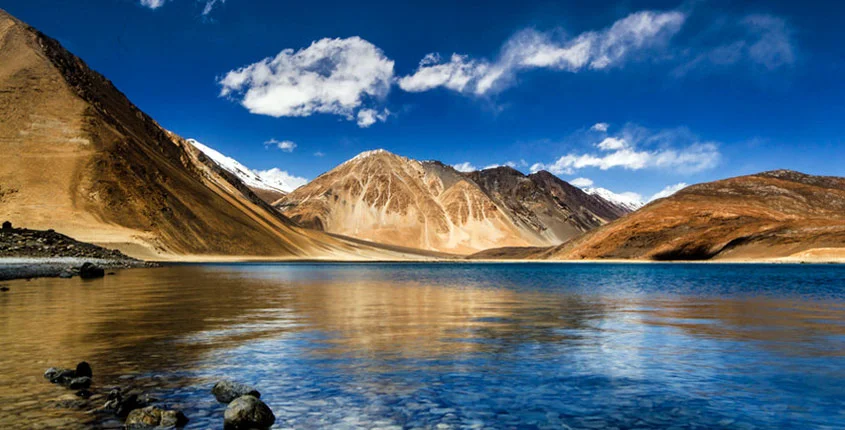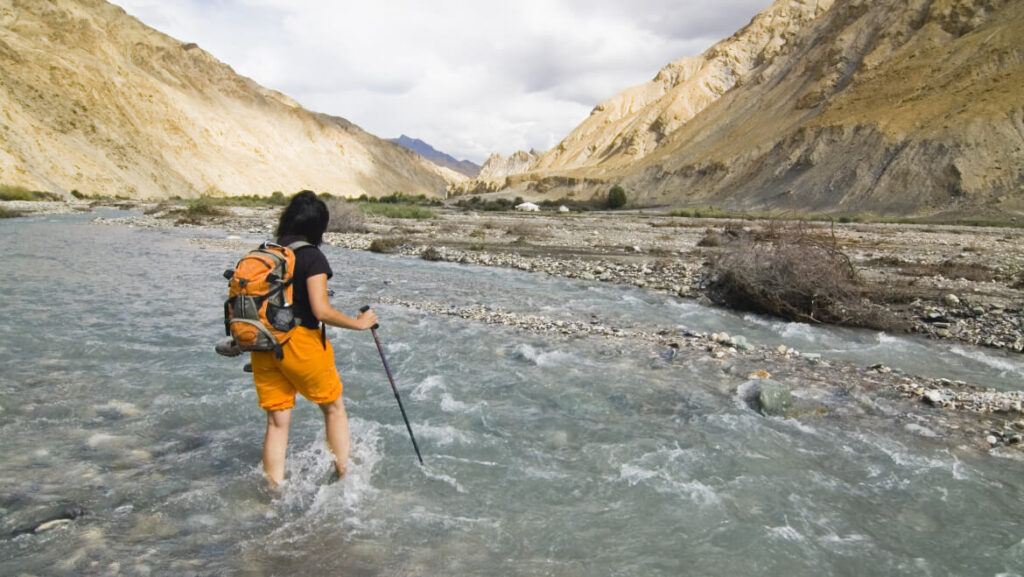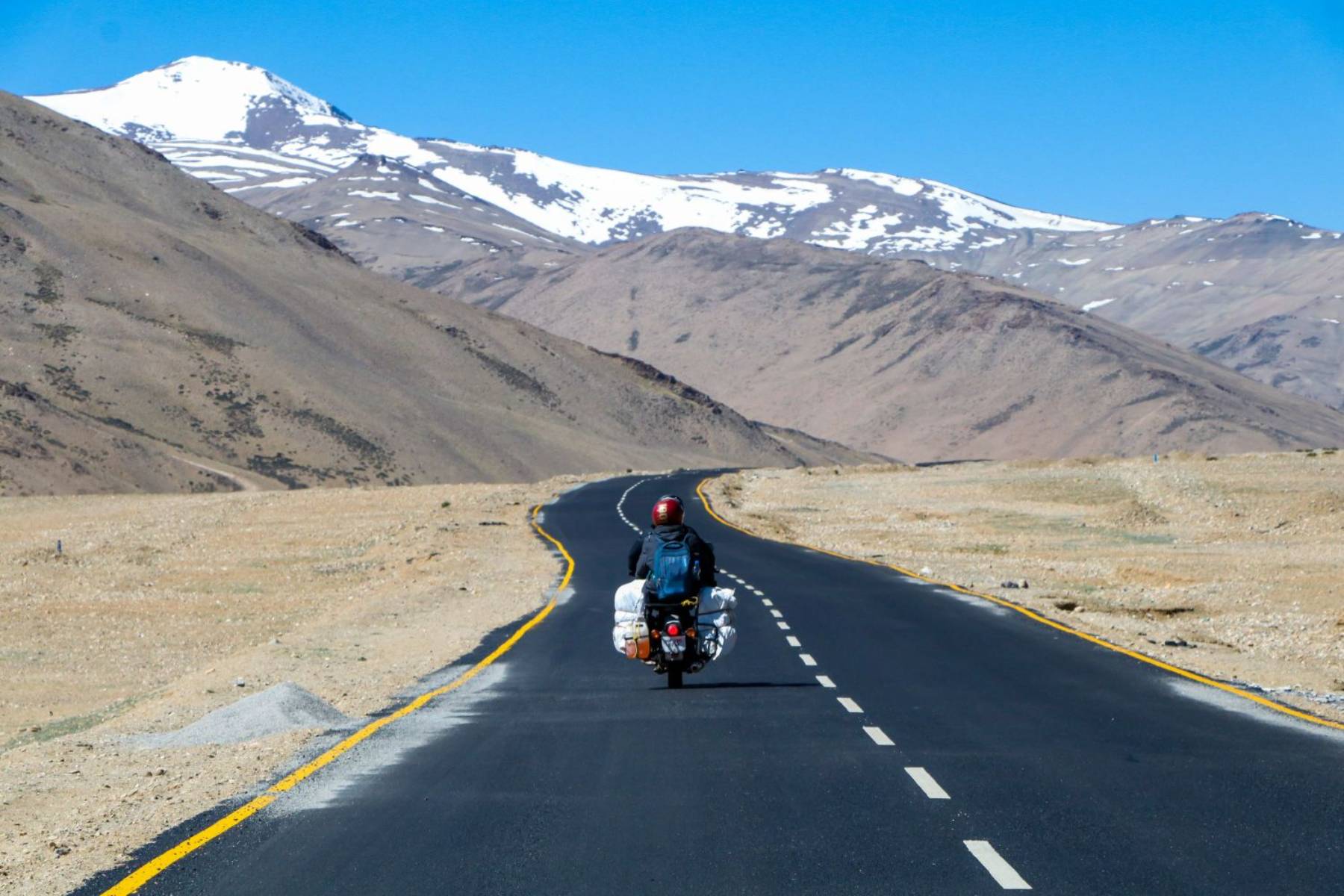Leh Ladakh travel, often referred to as “The Land of High Passes,” is a dream destination for travelers seeking breathtaking landscapes, rich culture, and thrilling adventures. Nestled in the northernmost region of India, Ladakh is a land of stark contrasts—snow-capped peaks, serene monasteries, crystal-clear lakes, and rugged terrains make it one of the most sought-after travel destinations.
Whether you’re an adventure enthusiast craving a motorbike trip along the world’s highest motorable roads, a nature lover looking to soak in the serenity of Pangong Lake, or a spiritual seeker eager to explore ancient monasteries.
Best Time to Visit Leh Ladakh
Choosing the right time to visit Leh Ladakh depends on what kind of experience you seek. Each season offers a unique charm and adventure.
1. Summer (April to June) – Peak Tourist Season
- Ideal for sightseeing and road trips.
- Roads from Manali and Srinagar to Leh are open.
- Popular attractions like Pangong Lake, Nubra Valley, and Magnetic Hill are accessible.
- Temperatures range between 15°C to 25°C.
2. Monsoon (July to September) – Offbeat & Adventurous
- Ladakh experiences very little rainfall due to its high-altitude desert terrain.
- Perfect for travelers who enjoy fewer crowds and dramatic landscapes.
- Beware of occasional landslides on Manali-Leh and Srinagar-Leh highways.
- Temperatures range between 10°C to 20°C.
3. Winter (October to March) – Snowy Wonderland
- Best time for winter expeditions and the famous Chadar Trek on the frozen Zanskar River.
- Heavy snowfall makes road access challenging, but flights operate from Delhi to Leh.
- Ideal for photographers looking to capture a snow-covered Ladakh.
- Temperatures can drop to -15°C to -30°C.
How to Reach Leh Ladakh
1. By Air
- The Kushok Bakula Rimpochee Airport (Leh Airport) is the only airport in Ladakh, with direct flights from Delhi, Mumbai, Chandigarh, and Srinagar.
- Flights are the best option for those who want to avoid long road trips.
2. By Road
- Manali to Leh Highway (472 km): One of the most scenic road trips in India, this route opens from May to October.
- Srinagar to Leh Highway (434 km): Opens from April to November, this route passes through breathtaking landscapes and the Zoji La Pass.
- Self-Drive & Bike Trip: Leh Ladakh is a dream destination for bikers; popular routes include Royal Enfield journeys via Manali or Srinagar.
Top Attractions in Leh Ladakh
1. Pangong Lake

One of the most iconic spots in Ladakh, Pangong Tso is a mesmerizing blue lake stretching across India and Tibet.
- Best time to visit: May to September.
- Activities: Camping, photography, and star-gazing.
2. Nubra Valley & Diskit Monastery
- Home to the unique Hunder Sand Dunes and Bactrian camels.
- The Diskit Monastery features a 106-foot Maitreya Buddha statue.
- Accessible via the Khardung La Pass, one of the world’s highest motorable roads.
3. Leh Ladakh Magnetic Hill
A mysterious spot where vehicles appear to move uphill on their own due to an optical illusion.
4. Tso Moriri Lake
- A high-altitude lake known for its pristine beauty and rare bird species.
- Less crowded compared to Pangong Lake.
5. Leh Palace & Shanti Stupa
- Offers panoramic views of Leh town and the surrounding Himalayas.
6. Zanskar Valley & Chadar Trek
- Ideal for trekking and river rafting adventures.
- The Chadar Trek (Frozen River Trek) is one of the most thrilling winter treks in the world.
Permits Required for Leh Ladakh Travel
Foreign and domestic travelers need certain permits to visit restricted areas in Ladakh.
- Inner Line Permit (ILP): Required for visiting places like Nubra Valley, Pangong Lake, and Tso Moriri. Available online or at the DC Office, Leh.
- Protected Area Permit (PAP): Required for foreign nationals.
Adventure Activities in Leh Ladakh
1. Motorbiking & Cycling
- Ride through the Khardung La Pass and Chang La Pass.
2. Trekking & Camping

- Famous treks: Markha Valley Trek, Stok Kangri Trek, and Snow Leopard Trek.
- Camping by Pangong Lake and Tso Moriri offers breathtaking views.
3. River Rafting
- Experience white water rafting on the Zanskar River.
4. Wildlife Safari
- Spot the elusive snow leopard and Tibetan wild asses in Hemis National Park.
Travel Tips for Leh Ladakh
- Acclimatization is Key: Due to high altitudes, take at least 24-48 hours to acclimate before engaging in strenuous activities.
- Pack Smart: Carry warm clothes, waterproof jackets, trekking boots, and sunscreen.
- Fuel Up: Petrol pumps are scarce, so refuel at Leh, Karu, and Diskit.
- Carry Cash: ATMs are available in Leh but may not work in remote areas.
- Network Connectivity: Only BSNL and Airtel postpaid connections work well.
- Respect Local Culture: Dress modestly, avoid littering, and be mindful of Ladakhi traditions.
Conclusion
Leh Ladakh is more than just a destination—it’s an experience that leaves travelers in awe. Whether you’re a biker, trekker, photographer, or simply an explorer, Ladakh has something to offer. From its rugged terrains and stunning lakes to ancient monasteries and thrilling adventures, this high-altitude paradise is truly one of the most incredible places in the world.
Plan your Leh Ladakh trip carefully, follow safety precautions, and embark on an unforgettable journey through the mystical landscapes of the Himalayas!









